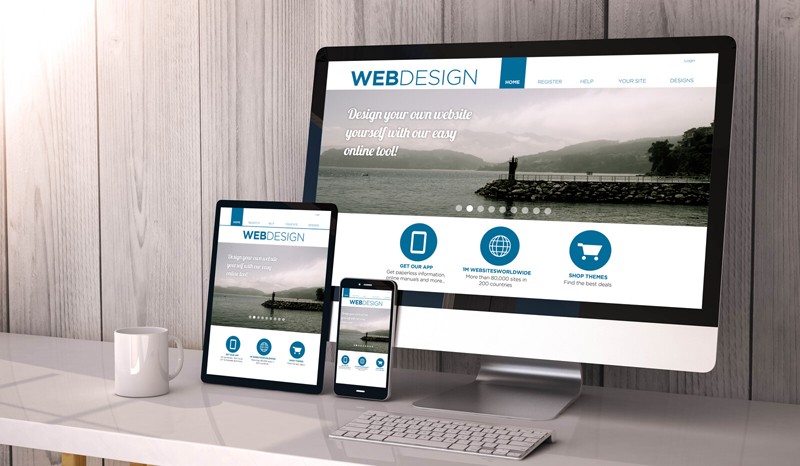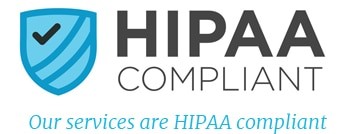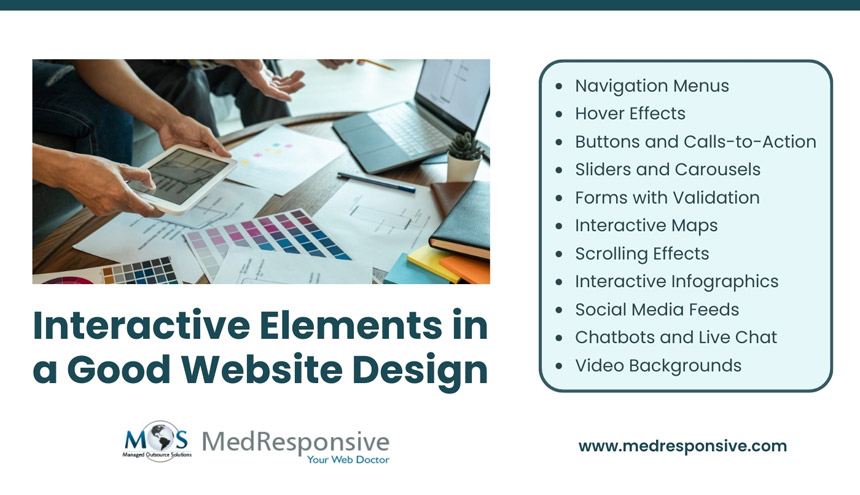Having a well-designed and informative website is paramount for a medical practice. A website serves as a virtual front door, offering patients a convenient and accessible way to learn about the practice, its medical professionals, and the range of services provided. It acts as a centralized hub for disseminating crucial information such as office hours, contact details, and appointment scheduling, and helps streamline patient interactions. Moreover, a website establishes credibility and trust, showcasing the medical practice’s expertise, certifications, and patient testimonials. Patients increasingly turn to the internet to research healthcare providers, and a professionally crafted website facilitates this process and reinforces the practice’s commitment to transparency and patient education. Ultimately, a robust online presence made possible with the support of reliable digital marketing services enhances patient engagement, fosters communication, and contributes significantly to the overall success and growth of a medical practice in the digital age.
A helpful and informative medical practice website is the optimal way to share resources with patients, tackle their concerns, demonstrate your expertise, and spread the word about your growing practice. It is the most important communication and marketing tool for any medical practice. While designing a website for your medical practice, keep your target audience in mind so that you can ensure a great user experience.
Some features can make a lot of difference – both in terms of helping patients trust your practice as well as improving your website’s user experience.
Transform your medical practice with a custom website – explore options.
Let our custom web application development company help you with the right solutions!
Key Considerations When Designing an Effective Medical Practice Website
Keep the following factors in mind for the best results from your website.
User-friendly design: Design your medical website according to the patient group your practice aims to attract. Prioritize an intuitive and easy-to-navigate design for a seamless user experience. Ensure that essential information such as contact details, services offered, and appointment scheduling is easily accessible.
If you target younger patients, you could use more color in your design. If your targeted population group is the elderly or those with disabilities, ensure that website navigation is simple and smooth. Have a simple navigation menu with options for requirements such as “Schedule an Appointment,” or “Meet Our Staff.” For the design to be simple and clear, there should be a balance in the use of photos and copy.
Mobile responsiveness: Most patients are now visiting your website from their mobile devices rather than desktop computers. So, you need a responsive web design that fits all screen sizes and resolutions – mobile, laptop, tablet and desktop. Optimize the website for mobile devices to accommodate patients who access information on smartphones and tablets. Mobile responsiveness is crucial for both user experience and search engine rankings.
With advancements in technology, more and more people are now using mobile phones to search for the right doctor and mostly prefer to schedule a consultation online. If your website fails to open on certain devices, you may be losing your potential patients. Ensure that your website’s treatment menu and tabs are user-friendly for people on phones and tablets. Test the performance of your website on various devices periodically.
HIPAA compliance: Health Insurance Portability and Accountability Act (HIPAA) was designed to provide guidelines and regulations on the security of the personal information of patients. It is critical that all healthcare websites take extra steps to secure their site to be HIPAA compliant. Make sure your website design adheres to HIPAA regulations to protect patient confidentiality and sensitive medical information. Also, implement secure data transmission and storage practices.
Invest in higher level security measures and use Secure Sockets Layer (SSL) to protect your website. All relevant information related to patients, which is contained in contact forms, appointment request forms and online contact forms must be encrypted. Failing to secure electronic Protected Health Information (PHI) can lead to drastic consequences such as costly lawsuits, HIPAA fines and complaints.
Patient testimonials and case studies: Patient testimonials and case studies hold immense significance in the healthcare industry as they serve as powerful tools for building trust and credibility. Let the visitors know that you have happy patients.
Video testimonials of patients can have a positive impact because they are authentic, more engaging and it improves trust in new as well as current patients. You can integrate patient reviews into your website by creating a page dedicated to reviews and testimonials, by displaying random snippets throughout the website, making small video clips of those reviews and including specific reviews on your services page. Make sure to implement strategies to generate new patient reviews and showcase them on your website homepage and a testimonials page.
Visually appealing photos and graphics: Consider including high quality, attractive photos of patients, staff, and photos relating to various procedures relevant to your practice in your website. Online videos of your treatments and virtual tours of your practice are also great ways to make patients feel welcome at your practice before they ever step foot in your office. Visual content gets more shares and views compared to text.
Medical websites featuring visual content tend to perform better than those with lesser visual content. However, ensure that you maintain balance when including visual content. Also, understand that large files sizes could have a negative impact on page loading time and frustrate visitors. Since all devices do not support Flash technology, do not use designs that activate Flash.
Quality content optimized for users and search engines: Publishing relevant content demonstrates your expertise in the field. Your website should be rich with informative content – blogs, videos, infographics, FAQ and more. Try to incorporate informative videos in the home page to introduce your practice to the reader. Active blogs, especially those written by doctors will help create a connection with patients as well as prospective patients. You could use the expertise of a medical marketing specialist to develop good content. This would ensure that the content is in keeping with your brand and will convey your message more strongly.
Your content must be reliable. Do not use real patients’ names if you are referring to specific cases. Ensure that your content is compliant with local, regional, and state laws and regulations and make sure it addresses the expectations of your targeted audience.
Focus on loading speed: Ideally, your website should load in 3 seconds or less on all devices. If the website takes a longer time to load, it would result in bad user experience. Non-optimized images, cheap web hosting and bloated code are the three main reasons for slow-loading sites. Optimize the website for fast loading times to prevent user frustration. Compress images and minimize unnecessary scripts to improve performance.
By incorporating interactive elements, a website can create a more engaging and user-centric experience, providing increased communication and satisfaction among visitors.
Designing Your Medical Website According to Modern Standards
Your website should be designed in keeping with current design standards and best practices. Think from the point of view of your potential patients and consider how you will search for the medical services, where you will look for them, and what you expect to find. Your website should provide your targeted audience with the right answers to their questions. A custom web application development company can provide the needed support for medical website design. Make your practice visible on all important online platforms your patients may use such as social media, YouTube, authority sites and so on.



